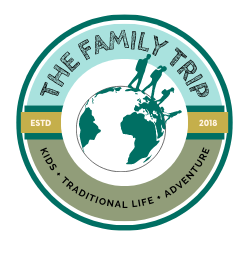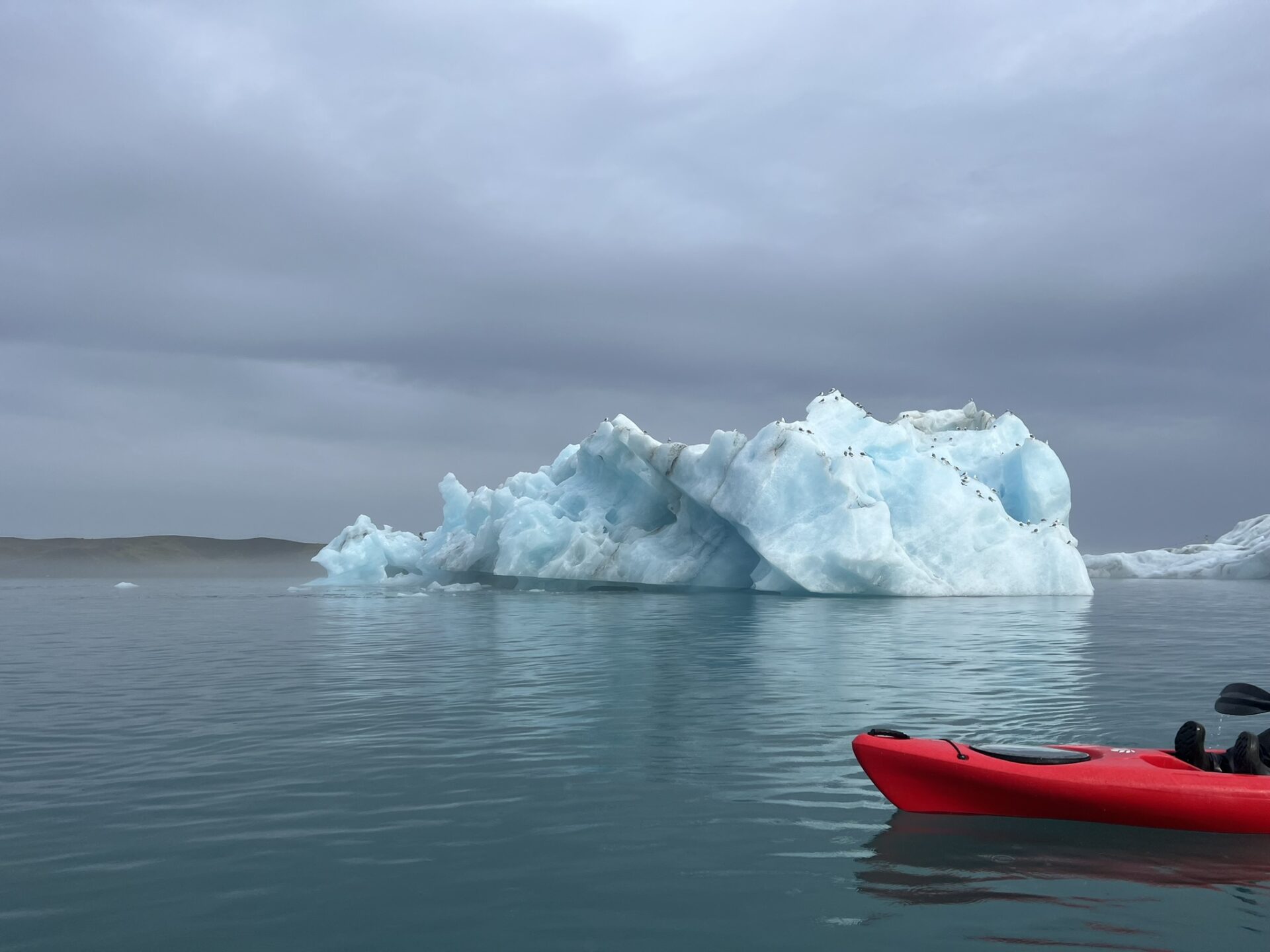
It is impossible to understand, deep down, that the places we visit will never be the same again. As tourists, we take our snapshots and that’s how the place stays: forever. In our minds, on our phones, in our memories. Yet that’s not the reality.
The reality is the landscapes we see are living and breathing. They move and change. Our footsteps simultaneously make an impact but then are blown away.
Nowhere did I feel this more than while kayaking in a glacier lagoon in Iceland.
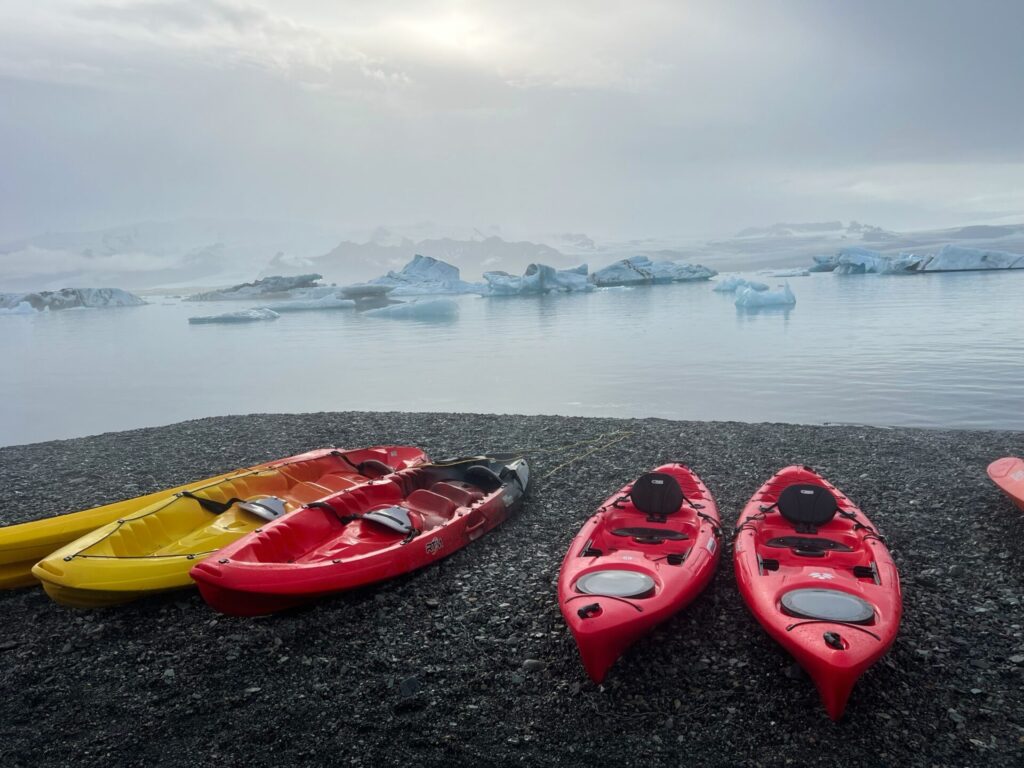
During our trip to Iceland’s South Coast, traveling in our campervan, we wanted to explore as much of the gigantic glacier as possible. After all, we had driven there (after flying to the country), so it seemed worth maximizing the experience.
We walked on the glacier, and our next epic Icelandic adventure was to paddle in Jökulsárlón Glacier Lagoon.
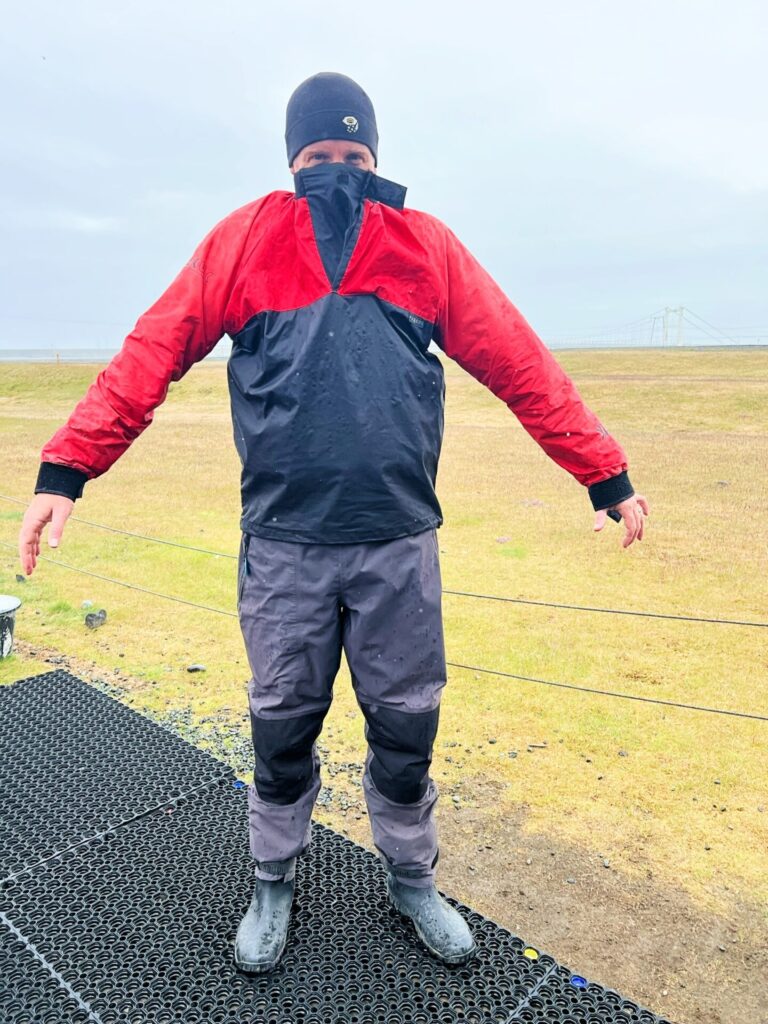
Kayaking in a Glacier Lagoon in Iceland
Jökulsárlón Glacier Lagoon is a bit of frosty heaven, and is wildly different from what we normally see here in the Southeast region of the U.S.
This is a lake caused by glacial melt. Where the glacier begins to break off, huge chunks of ice over 1,000 years old float around, carrying sediment and stories from miles away. At its deepest, the lagoon is 814 feet deep. Currently, the surface area is 11.2 square miles but that grows as the glacier melts. It is expanding at a rate of 0.5. square miles a year. It has doubled in size in the past 15 years alone.
I was astonished to learn that this lake was formed in the 1940s. I was again struck that a place that seems it has been there since time immemorial is just a passing moment.
The icebergs themselves, the ones I was seeing on my peaceful paddle through this icy blue water, would only last a week. They are no longer there. Every picture in this article no longer possible to replicate.
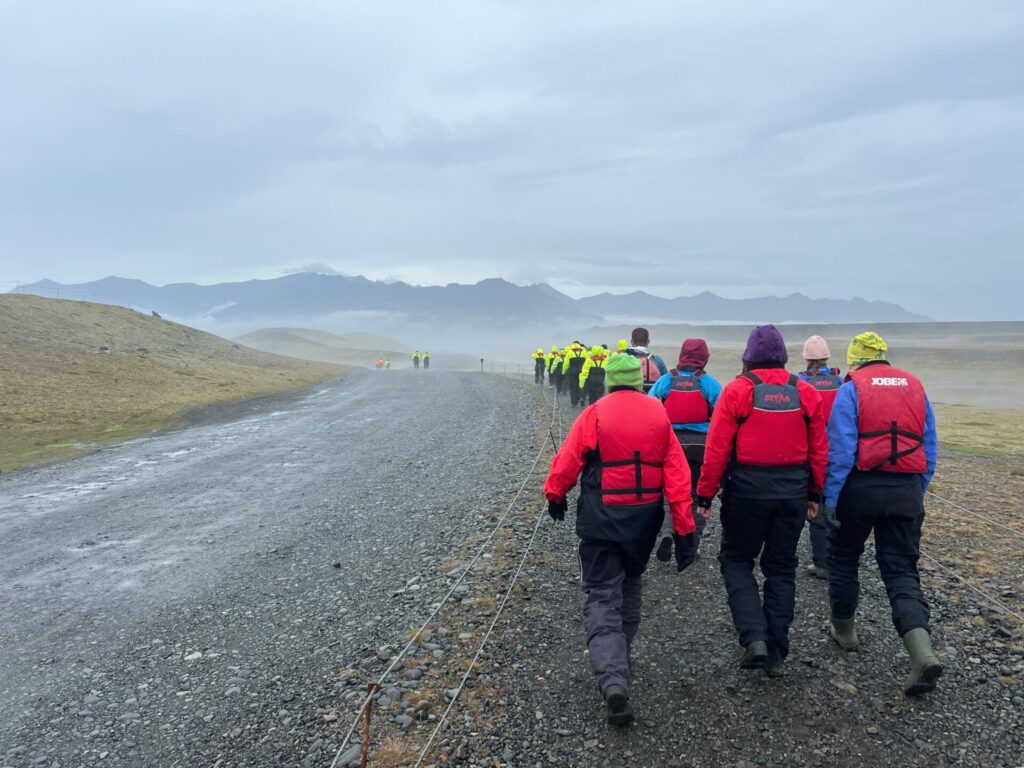
Jökulsárlón Glacier Lagoon became a major tourist attraction after it made its big screen debut in a James Bond movie in 1985. In 1987, the first commercial boat tours started and one company alone estimates that they’ve given boat tours to over 900,000 tourists since they opened.
But we still thought this experience was worth it – primarily because we did it the way we loved.
There are many ways to explore the glacier lagoon, depending on what kind of experience you are interested in. It seems the most popular way is by motorboat. Amphibious boats and small boats and big boats and Zodiac boats are all swamping and puttering loudly around the lagoon.
This was not the way we chose to see the lagoon. We picked the quieter, slower pace: kayaking.
I can’t recommend this method of exploration enough. Instead of bludgeoning over nature, we felt part of it. Given the fragility of the entire area, it also felt like a better way to both enjoy and preserve this area.
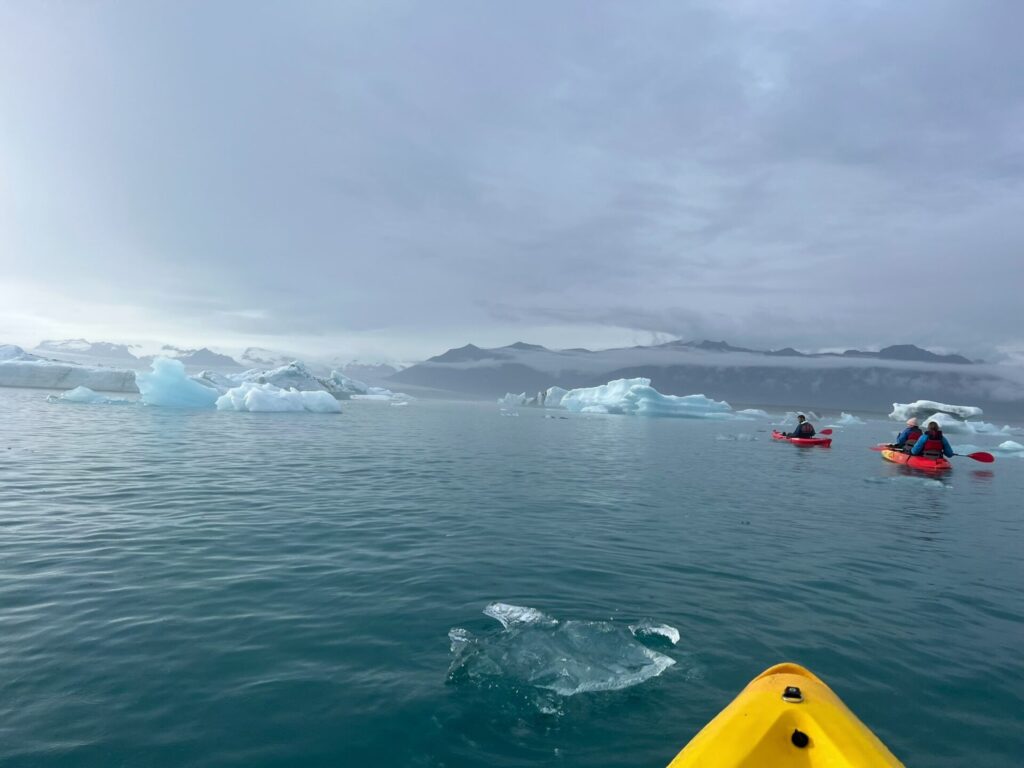
We had packaged this tour with our glacier hike through Arctic Adventures. We elected to do the kayak second, so we were there after noon. Note that for this package excursion, you must have your own transportation to and from the starting sites.
We had a bit of a hard time finding the kayaking outfitter once we arrived at the parking lot. There were a lot of people, the outfitters have trailers set up with names on the sides, and most were Zodiac boat tours. Also confusing, the kayak provider was not named Arctic Adventures.
After being bounced out of the Zodiac boat tour trailer with a bit of a giggle and a sneer, we eventually found our guy.
An entire waterproof body suit was provided, as well as boots and lifejackets.
We were glad, though, that we had brought gloves and hats.
While the air temperature was comfortable, the water was cold (as cold as you imagine glacial water is). All tourists are required to wear the water suits for safety.
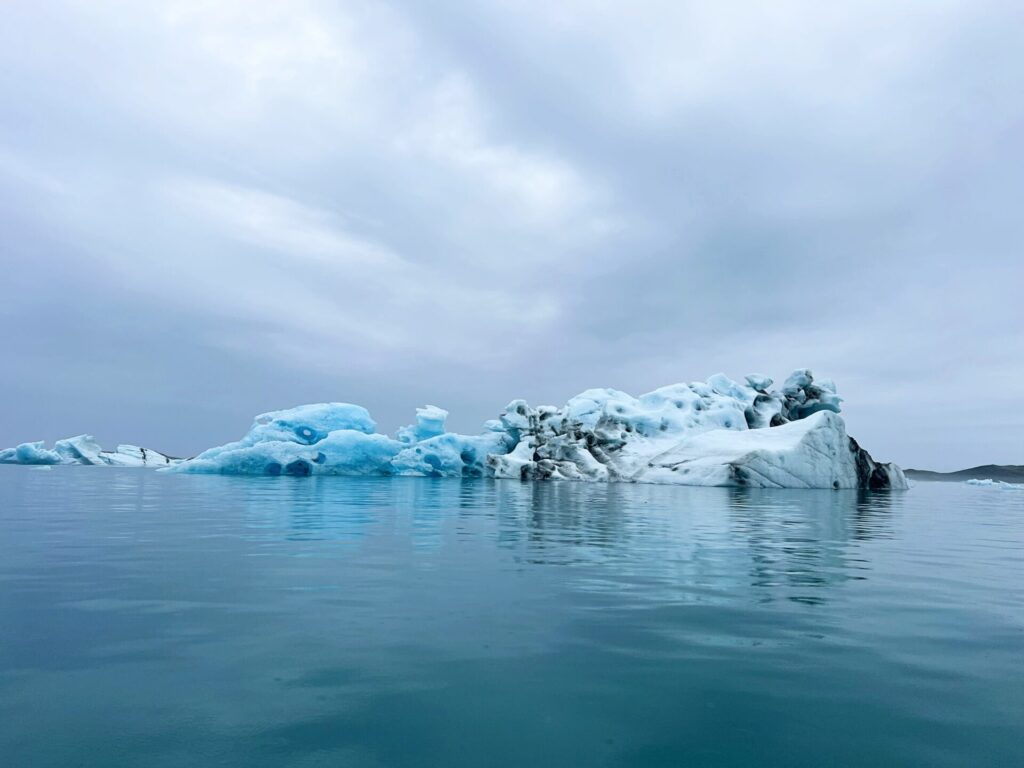
Once suited up, we walked down to the “beach” front, where the kayaks were located.
Mr. Family Trip and I shared a tandem kayak, as directed. Our guide took us out, with strict instructions as to how close we could get to the glaciers.
The icebergs do crumble and fall, even tipping, so getting too close is simply dangerous. One website cautions readers that even though Justin Bieber may have climbed on an iceberg here for his music video, that action was strongly discouraged.
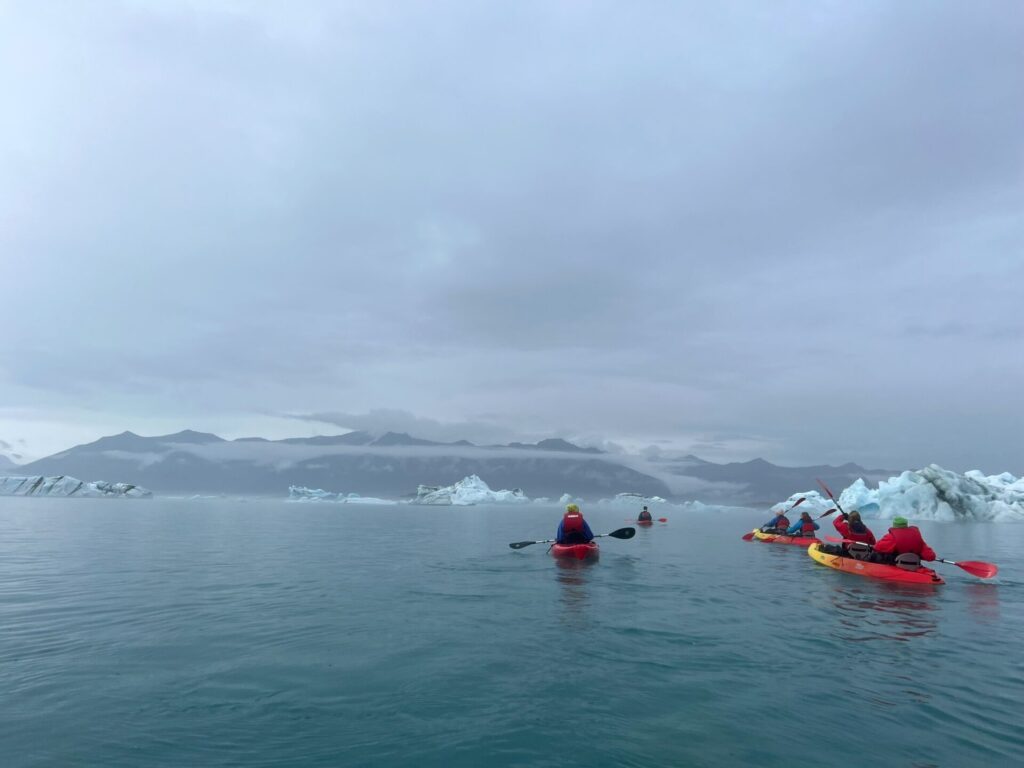
This glacier lagoon has the kind of views with depth and breadth that the human mind can’t even fathom, explain or adequately capture. Above us, as we were paddling, the tip of the glacier reached a height of 3,000 feet. Since this lake mixes saltwater and freshwater it has a unique color. We could reach down and pick up chunks of ice, washed of volcanic ash, of a color that Crayola never puts in a crayon box. It is too hard to recreate.
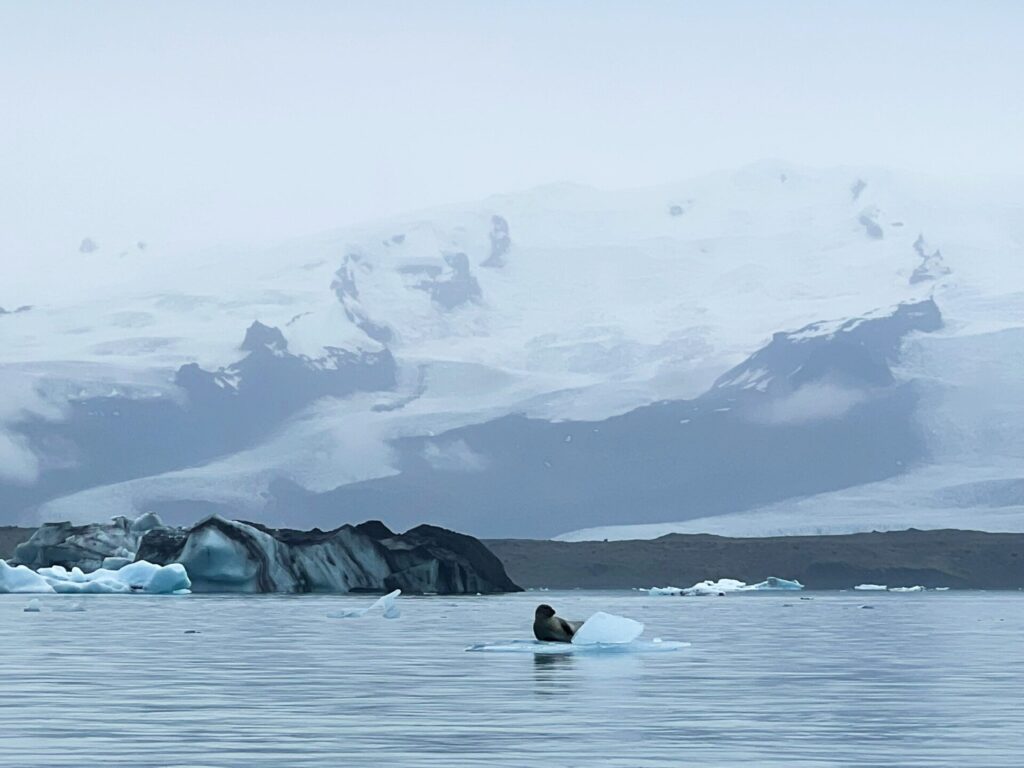
The kayaking in the glacier lagoon was incredibly easy. We went slow. There was no wind to speak of. There is a very gentle current, there are no waves.
Once I got over my fear of being crushed to death by a piece of ice hurtling down from the top of an iceberg (I am no Justin Bieber), it was one of the most relaxed paddles I’ve done (and I paddle a lot, like here and here and here and here.)
But the magic really happened when the seals came out to play. This was the moment where I became profoundly grateful we had kayaked rather than relied on motors. Our experience simply could not have happened if we hadn’t been in unassuming, quiet kayaks.
Our guide spotted a seal sitting on an iceberg and slowly, quietly, we paddled up to it. While Zodiac boats also came up, they were unable to get close. The stopped far away, dozens of people snapped photos, and they jetted off again. Yet our little kayak tribe followed our guide and, in silence, were able to get incredibly close to the seal.
Then, to our delight, the seal’s buddies came out. And for at least twenty minutes they splashed, played, followed us, stuck their heads up to look at us, all within yards of our kayaks.
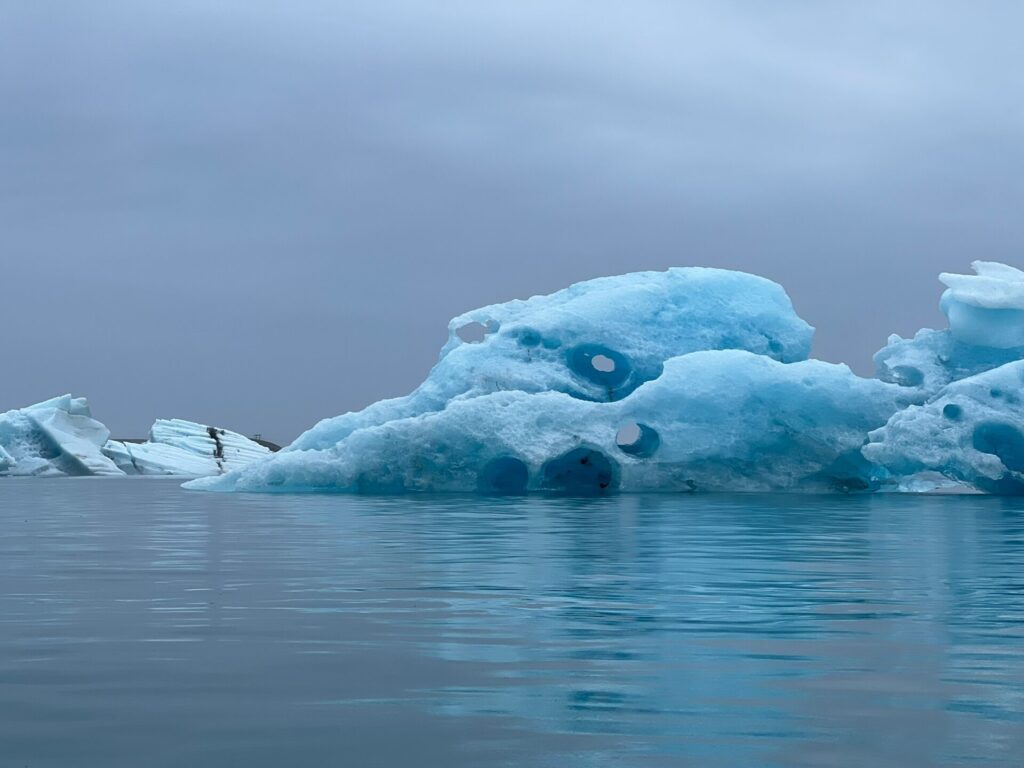
We spent most of the kayak tour in awe and wonder. We were stilled, quiet and humbled. My paddle strokes were making changes to the world around me, and yet I was such a small speck in the landscape.
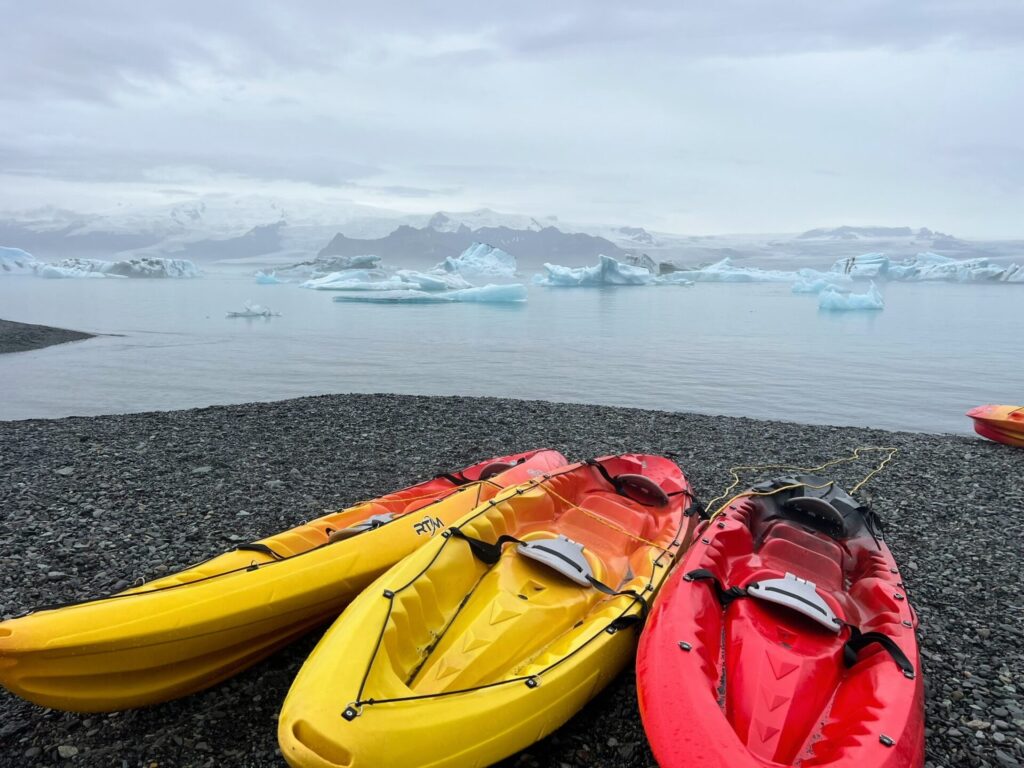
Visiting Black Diamond Beach in Iceland
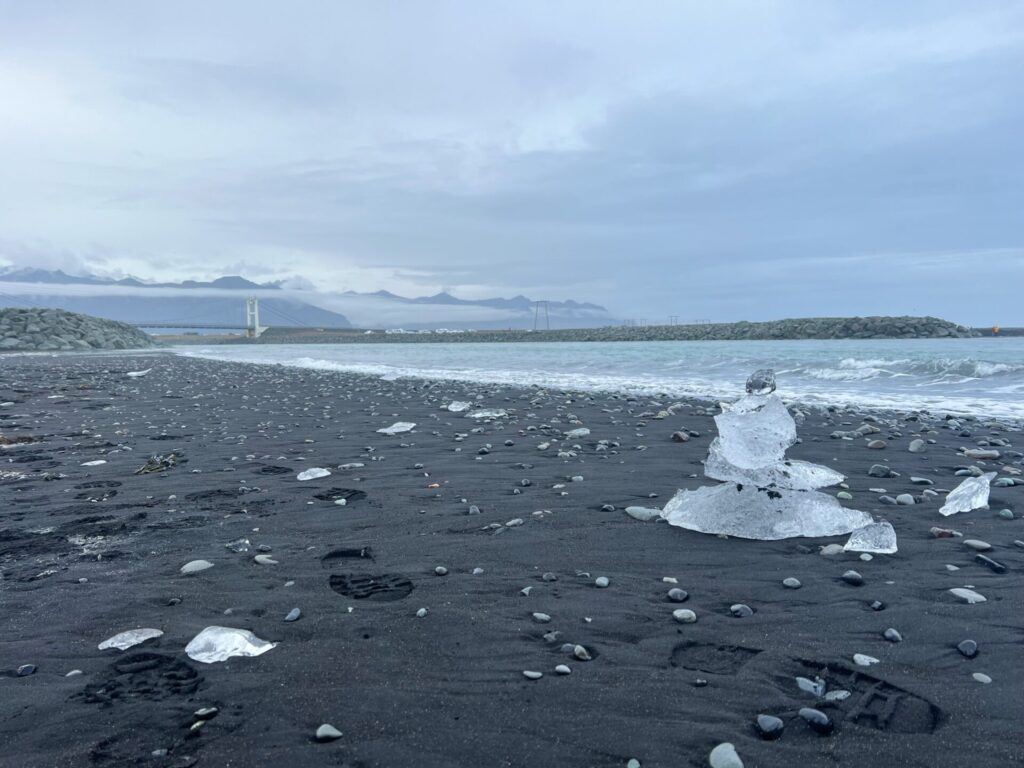
Right around the corner from the Jökulsárlón Glacier Lagoon and over the bridge is the Diamond Beach.
Diamond Beach is a black sand beach sprinkled with pieces of icebergs. As the icebergs in the lagoon melt, they eventually become small enough to float. When that happens, the gently moving water carries them towards the sea, and some wash up on the black sand.
The contrast of colors is beautiful to behold. While we had already made footprints on black sand beaches in Iceland during our road trip, to see the polished ice make translucent sculptures against the dark grains was worth the stop.
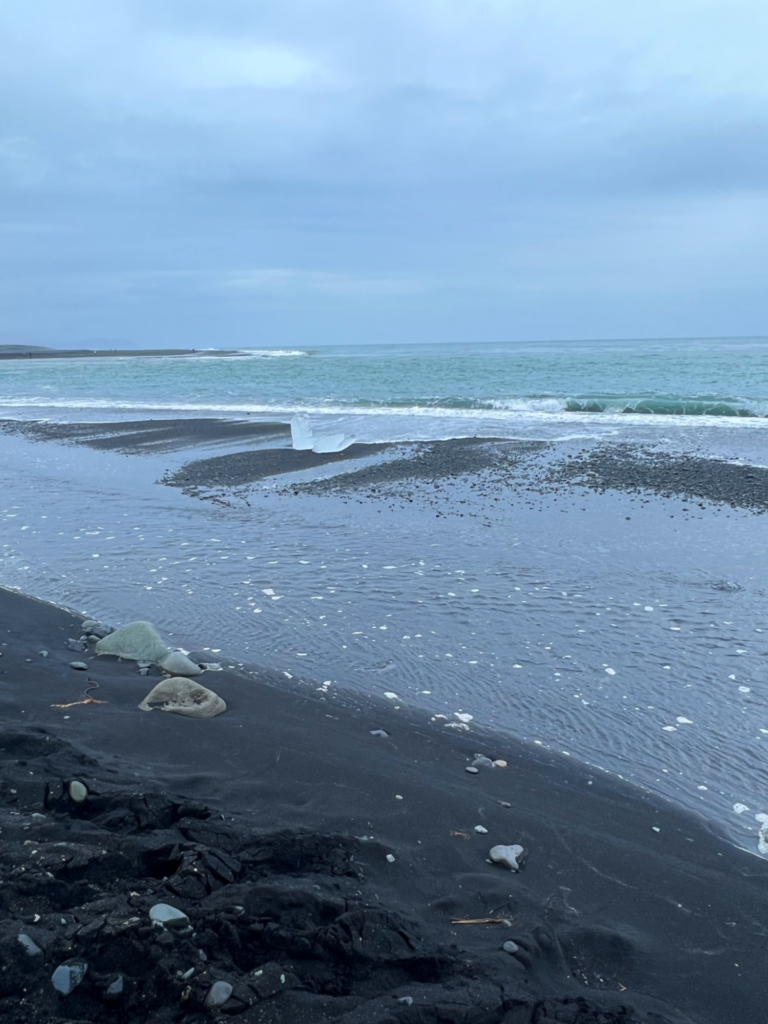
I am so honored to experience this place as it was, and so humbled to recognize that what I saw will be so different from what you will see. Our adventures in this area of Iceland can not possibly be the same.
But they will both be epic.
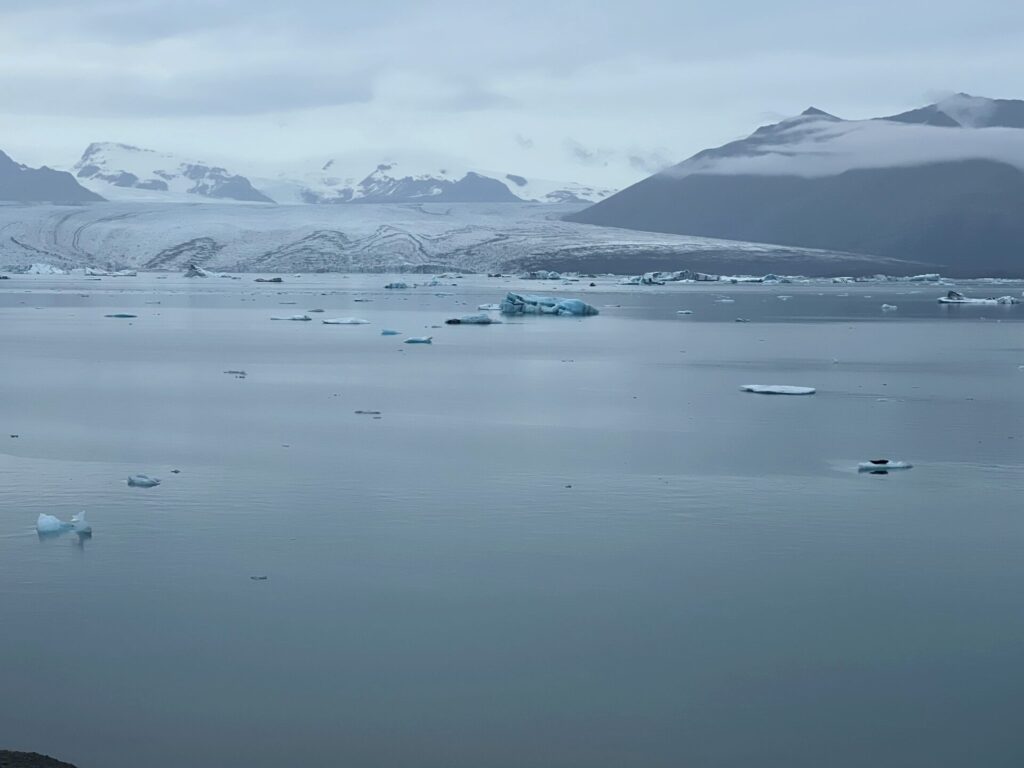
Notes on Planning a Trip to Jökulsárlón Glacier Lagoon
- This natural wonder is a minimum of a 5-hour drive from Reykjavik, probably closer to 6-hours.
- You will likely need your own transportation to get you to this area and, as we shared in our post on the National Park, lodging is not easy to find in the area so plan ahead.
- The summer months are when boat rides are available; the winter months are when the Northern Lights show off and this is a great spot to see them.
- You can see the glacier lagoon without going on a boat of any kind. The Lagoon is easily accessible from the Ring Road, there are viewing platforms from the parking lot that are worth the peek, and there are scenic breathtaking stops along the drive.
